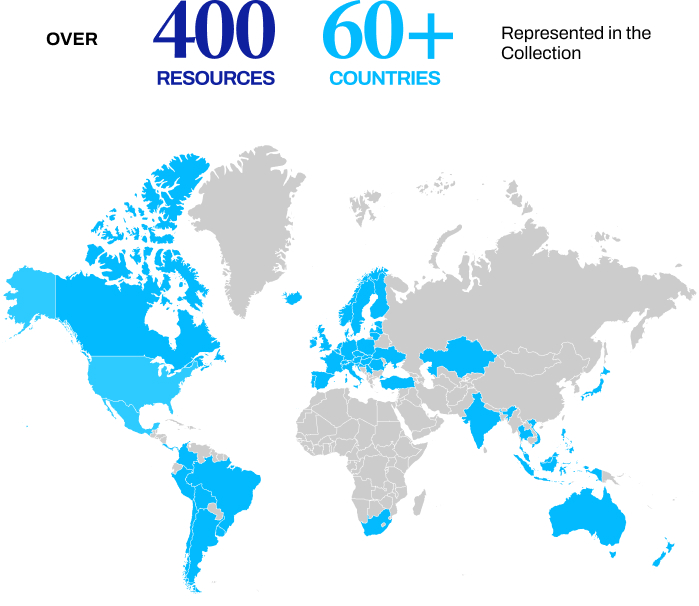Playbook Overview
Why is the Playbook needed?
In recent years there has been a consistent growth in the number of public sector-led Building Information Modelling (BIM) and wider digital construction transformation programmes worldwide. Digital construction transformation is a programme to change the way that the built environment is designed, procured, constructed and operated. It is accomplished through the introduction of digital technology, processes and ways of working to better deliver the world’s infrastructure.
Public Sector BIM Programmes

The growth in countries with public sector led transformation programmes based on desk research by the Global BIM Network in 2022.
The Global BIM Network aims to build on its members’ transformation journeys to transition towards a digital built environment that delivers socio-economic and environmental benefits for people and places while boosting the global economy.
One method of delivering on this aim has been the publication of a reference library of curated resources. This resource library, called the Information Collection, is accessed on the Global BIM Network website.
The Information Collection is an online repository, primarily for the global public sector and multi-lateral organizations seeking guidance, documentation and other resources to facilitate the strategic introduction of BIM worldwide. It is also open to everyone with an interest in growing the benefits resulting from the structured use of data as part of the larger digital transformation of the construction sector.
Since its launch in 2021, the collection has grown to more than 400 resources from over 60 countries. A collection of this size can provide valuable insights from a diverse range of case study transformation programmes. However, it can also create challenges searching for resources related to specific concepts and synthesising varied information sources into a set of organised, actionable, common ideas and outputs.

Scope and scale of the Global BIM Network Information Collection resources
This Public Sector Construction Digital Transformation Playbook is a response to those challenges. It organises the ideas contained within the Information Collection, identifying common approaches and providing a contextual method of finding the most relevant resources. The aim is to quickly connect those involved in BIM (and other wider public sector-led infrastructure) transformation programmes to information which is relevant to their specific needs and to provide tools to assist in making sense of these resources.
What does the Playbook cover?
The Playbook is a section of the Global BIM Network website which can be used to identify common, good practice and provide an intuitive entry point into the network’s Information Collection.
JUSTIFYING
Making the case for change and securing fundingMOBILISING
Setting the programme up for success. Building the core transformation team, engaging with stakeholder groups, developing and organising a programme of workDEVELOPING
Defining the standards and guidance (sometimes referred to as a collaborative framework) to define the new way of working and remove barriers for consistent adoption.IMPLEMENTING
Testing and refining the collaborative framework based on the experience of pilot projects, building initial capacity, and generating rapid benefitsSCALING
Facilitating the building of capacity and implementation of the transformation at scale, across public sector, private sector and academiaWhat the Playbook is not
The Playbook is not intended to suggest a single solution, or a specific ‘best practice’ way to deliver a transformation programme. It does not include prescriptive recommendations. Rather, it provides those involved in transformation programmes with methods for organising and making sense of the programme approaches already taken by others and identifies some of the common themes and ideas.
Who is the Playbook for? The Global Network Personas
The Playbook can be accessed, and will be helpful, to anyone with an interest in accelerating and growing the benefits from BIM implementation and wider digital transformation of construction.
The Global BIM Network, website, Information Collection and Playbook is primarily aimed at public officials and representatives of multi-lateral organisations who are interested in encouraging, supporting, defining and implementing transformation. The different roles these individuals and organisations take within a transformation programme have been categorised into three general profiles, called network Personas.

Policy / Strategy
This persona would typically work within a cross-cutting public entity with responsibility for defining, and/or monitoring the implementation of sector-wide policy and strategy.
The persona often has responsibility for publishing the rules for other entities to follow.

Transformation Programme
This persona would typically be within a temporary organisation or programme specifically established to define how to achieve the change and provide leadership and support to the entities implementing the change, aligned with outputs published by the POLICY / STRATEGY persona.
The persona would commonly create and reference the standards and guidance for the new way of working.

Owner / Procurer / Operator
This persona would typically be within a cross-cutting or sector-specific public entity with responsibility for planning, procuring, owning or operating public assets.
The persona could have a role in the implementation of digital within the projects or assets of the organisation. They might also coordinate closely with the TRANSFORMATION PROGRAMME persona to ensure the OWNER / PROCURER / OPERATOR perspective is incorporated within the transformation programme.
Each transformation state section of the Playbook will identify how the scope and activities of that state will relate to each of the network Personas.
The most common public sector transformation approach is through a national programme, initiated and led by central government and initially implemented by central government entities and the supply chains which support them. This will often then cascade to sub-national and municipal public entities over time.
There are some situations where a sub-national or municipal entity might lead a programme without and overarching national programmes, for example, those entities might be more agile at responding to sector innovation or be the highest level of autonomous decision making (as for the States under a federated system).
The guidance in this Playbook (and the Information Collection resources) are relevant to all these situations and is not intended solely to provide guidance on national transformation programmes.
How will the Playbook help Global BIM Network members (and others)?
The Playbook will help those involved in digital transformation to unlock the benefits of a common approach by (1) organising and making sense of experiences from across the world; and (2) synthesising the common ideas and outputs.
According to the Handbook for the introduction of Building Information Modelling by the European Public Sector, there are several reasons why public organisations are adopting a common approach to BIM:
| Benefit of a common approach | Description of the benefit |
|---|---|
| Accelerate national efforts | Through collaborative working and sharing of best practice, nations can accelerate their own BIM initiatives by learning from others. |
| Minimise costs | Wasted effort and investment can be minimised through reuse of existing developments and knowledge. |
| Impactful and robust programmes | By drawing upon existing knowledge and practical experience of what makes programmes successful, individual can be informed to create and implement effective initiatives. |
| International critical mass | Taking a similar approach to neighbouring countries for the encouragement of BIM will increase the strength and effectiveness of each individual national programme. |
| Reducing trade barriers to growth | Alignment of approach will encourage trade and opportunity for growth across borders. Creating national specific approaches will likely confuse the construction sector, discourage cross border working and add a cost burden to the industry when complying with different national approaches. |
| Encourage international standards developments and software integration | A common approach creates the opportunity to encourage the development of standards for use in international markets. This ensures open competition in the supply chain and the open sharing of information across software platforms. |
